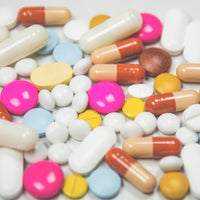ADHD in children is becoming more and more prevalent. Through the year 2011, the Center for Disease Control indicated that 11% of children from the age 11 to 17 have been diagnosed as having ADHD. That’s a lot of children. That’s also a lot of families impacted.
There’s a good chance that you are reading this because you are a parent looking to manage ADHD in your own child. If that is you, don’t feel discouraged. For starters, you’re not alone, and you’re not the first person to have to learn to do this.
There have many that have gone before you, and you can learn from their experiences. Read on to identify five parenting tips that parents have used before you to manage ADHD in children.
1. Learn to Discipline Not Punish
Part of learning how to manage ADHD in children is recognizing that much of your child’s behavior is due to things outside their control. Your child doesn’t necessary want to be inattentive and hyperactive. They just need help learning to manage and control the feelings and energy within them.
You should never punish a child for behavior outside his control. It would make no sense to punish your child for throwing up when they are sick. They might feel bad about making a mess on the carpet, but the outward effects of being ill aren’t something they have complete control over. In a similar way, your child can’t control how ADHD affects them and impacts their actions.
While you would never punish a child for throwing up on your carpet because they were sick, you might still teach and direct them to let you know when they are sick so you can help them to the bathroom. This comparison helps to show the important difference between punishment and discipline. Punishment is punitive and tries to force a change in behavior from negative reinforcement.
Discipline, on the other hand, instructs and teaches. With discipline, you can teach your child that certain behaviors disrupt. With corrective action, you can show them other more positive outlets to direct their energies.
2. Focus on Positive Environments
Effective management of ADHD in children depends on creating positive environments. This starts in the home, but also includes the school your child attends and the activities they participate in. Make sure the environments your child encounters daily reinforce positive aspects of their ADHD.
This could involve making sure their school has resources to help their ADHD instead of ignoring it. This includes talking to their teachers and coaches and creating effective management plans.
One important environment often overlooked is their primary care doctor. Be sure they see a practitioner who understands their ADHD and works with you to manage their symptoms better. Through their environment, identify ways to raise a happy ADHD child, which will in turn make your life happier and easier.
3. Use Clear Communication
ADHD in children creates enough distractions as it is, don’t add unclear communication to complicate things even further. Be firm with your child. Let them know and understand the consequences for their actions. Then always follow through on what you have said.
Always encourage the same positive activities and discourage the negative ones. Don’t go back and forth on what you will allow your child to do and not do. Children with ADHD need help focusing and following instructions. Being unclear and indecisive just creates more problems.
If you need some time to be certain you are communicating clearly, be sure to take the time. Plan it out; it will help everything in the long run. Clearly communicate what you expect from your child and don’t change those expectations.
4. Build in Structure
Help yourself manage ADHD in children through building regular routines. Routines provide structure and direction so you don’t always have to manage every little thing. Children with ADHD need reliable routines in their lives. Whether or not you realize it, you need them, too.
ADHD symptoms thrive in any environment without structure. Building structure and routine can seem daunting at first. It will take a lot of front end work planning out a daily routine.
Over time, though, you won’t have to plan at all because the routine will be like second nature. Daily structure helps to limit the distractions and negative release of energy and helps manage ADHD in children.
5. Emphasize Healthy Eating and Exercise
If you follow us here at FastBraiin, you will notice a trend of us focusing on healthy eating and exercise. We will tell you how physical activity improves ADHD, how and why to avoid mixing sugar and ADHD, and show you why play and exercise increases ADHD focus.
When it comes to managing ADHD in children, healthy diets and exercise cannot be emphasized enough. What goes in your child will vastly impact what comes out of your child. How your child directs their energy determines its positive or negative impact.
To better manage ADHD in children, be sure to emphasize healthy eating and daily exercise. With positive play, your child will focus their energy towards positive results. Healthy eating fuels better focus and development.
Getting a Handle on ADHD in Children
Use these tips and others to help yourself get a handle on managing ADHD in children. Proper management of ADHD symptoms will help your child succeed and help your household run more smoothly. In no time, you will be the pro at this and will be able to give tips to other parents looking for help.




